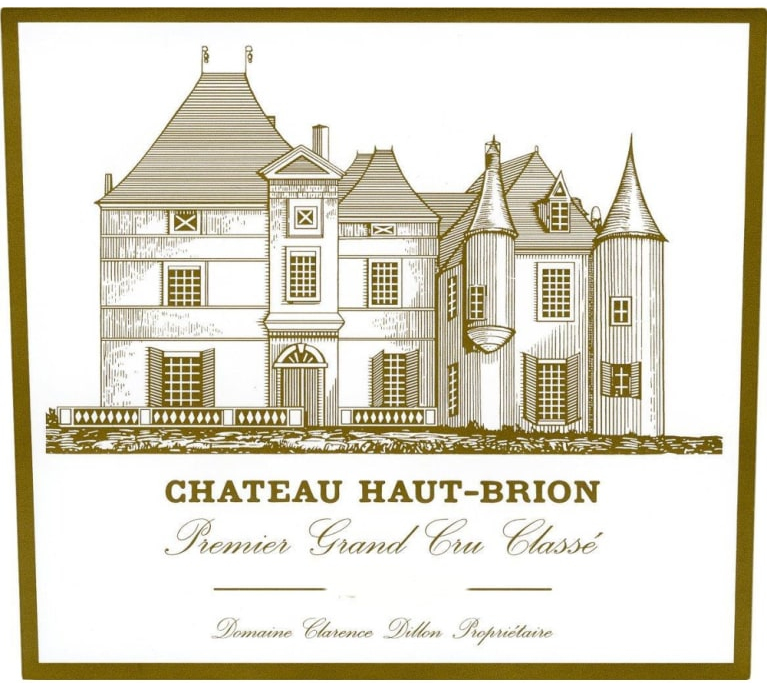Château Haut-Brion 2005
Review of the Estate
Château Haut-Brion is notable for its First Growth status, under both the 1855 and 1973 Mèdoc classifications, despite its geographical location in Graves. This mark of respect is due to the obsession with quality and continual winemaking improvements that have been the dominant modus operandi at Chateau Haut Brion over the past four centuries.
The modern estate grew from humble origins as a property known as Maison Noble d'Aubrion which was acquired by Jean de Pontac through his marriage to Jeanne de Bellon in 1525.
Pontac was responsible for expanding Chateau Haut-Brion, and creating an international market for the wines, the quality of which was noted by Samuel Pepys who wrote in April 1663,"here I drank a sort of French wine, called Ho Bryan, that hath a good and most particular taste that I never met with." However, Chateau Haut Brion was still known formally as Château Pontac until the late 18th Century when it eventually passed out of the Pontac family's hands.
As the first recorded First Growth to be imported into the United States, when Thomas Jefferson purchased six cases during his travels and sent them back to his home in Virginia, it is perhaps unsurprising that Chateau Haut-Brion was eventually purchased by an American. After a string of owners, financier Clarence Dillon acquired the estate in 1935. Chateau Haut Brion is currently owned by Domaine Clarence Dillon, which is a limited company and thereby prevents excessive divisions of the estate between successive generations. Presently, Prince Robert of Luxembourg is at the helm, with Jean-Philippe Delmas managing the viticultural aspects of the business.
As a First Growth, there is constant pressure to produce outstanding yet consistent wines and Château Haut-Brion has consistently embraced new technologies to meet this standard. In the 1960s, the estate pioneered the installation of stainless steel vats - the first of the First Growths to do so. This increased the reliability of the vinification process and positioned Chateau Haut Brion at the forefront of innovation in the Bordeaux region, producing a savoury wine which is both rich and intricate.

Vineyard
Surface area: 106.7 acres
Grape Varieties: 45% Cabernet Sauvignon, 37% Merlot and 18% Cabernet Franc
Average age of vines: 36 years
Density of plantation: 8,00 vines per hectare
Average yields: 35-45 hectoliters per hectare
Average cases produced: 11,000 per year
Plateau of maturity: 10 - 40 years
Château Haut-Brion 2005 Reviews / Tasting Notes
Robert Parker - The Wine Advocate
Point Score: 100
The mineral-laced 2005 Haut Brion (56% Cabernet Sauvignon, 39% Merlot and 5% Cabernet Franc) is exquisite. With its elegance and finesse, it is not as powerful as La Mission, but the nobility and complexity of the aromatics, incredible fragrance (subtle smoke and blue, red, and black fruits) that persists in the glass, full-bodied mouthfeel (though very light and delicate on its feet), and incredible length characterize this great Haut-Brion. It is just starting to drink well, and should continue to do so for at least another three decades. It is a tour de force in winemaking, but only 9,000 cases were produced.
Wine Spectator
Point Score: 100
This is incredible on the nose, showing coffee cake, blackberry, floral, coffee bean and vanilla bean, with Chinese spices. A very complex, full-bodied red, with seamless, hyperpolished tannins that caress every millimeter of the palate. Lasts for minutes. So beautifully balanced, I'm left speechless. Is it even better than the 1989? Best after 2017. 9,080 cases made.
Wine & Spirit Magazine
Point Score: 98
All mineral at first, this wine feels cloistered in a stone cellar, its profound depths of red fruit more an impression than an immediate sensual connection. That direct connection forms over the course of several days, as the brilliant energy of the wine grows increasingly apparent. It has the controlled power of a tho-roughbred, naked and beautiful. The choice between Haut-Brion and La Mission is difficult in this vintage; anyone investing in one should invest in the other. This may prove the grander of the two, but that will likely be a point of debate for 50 years or more.